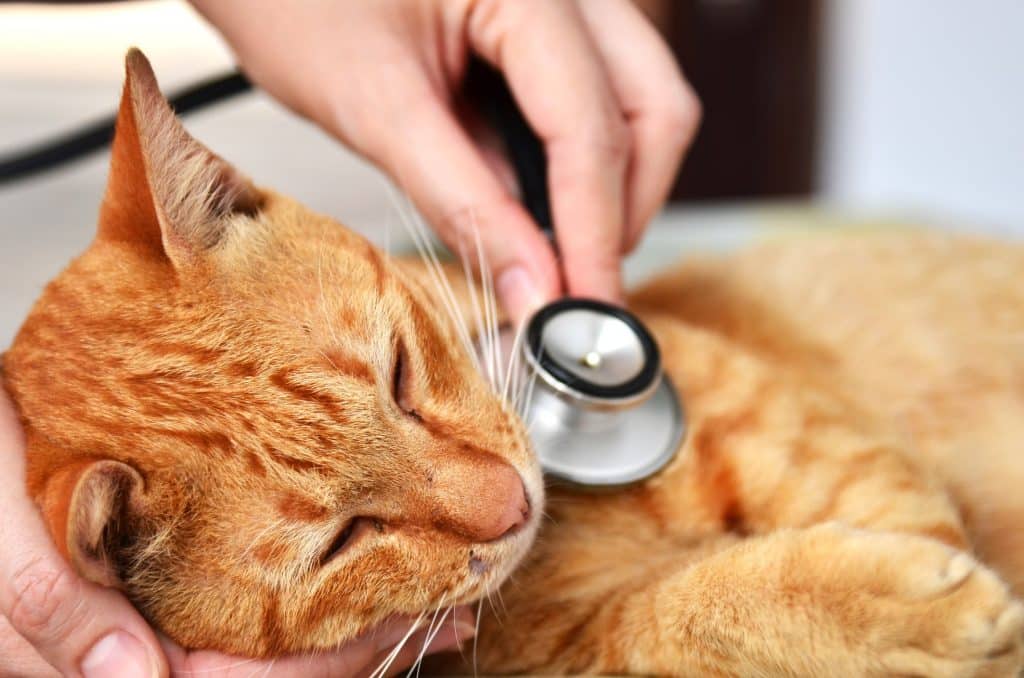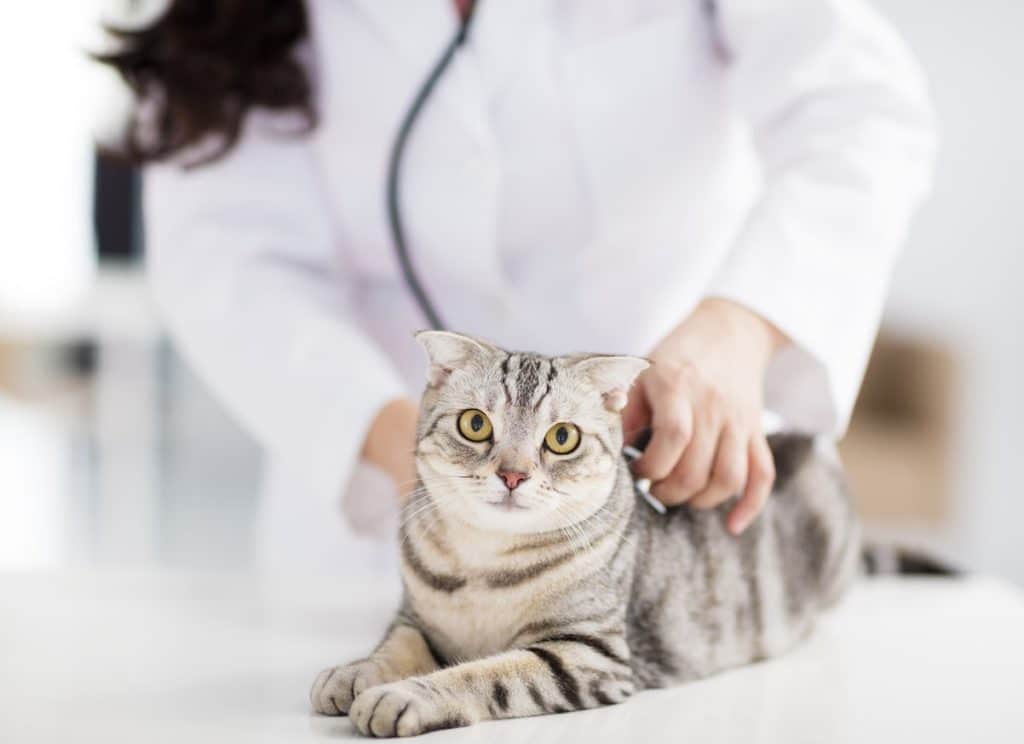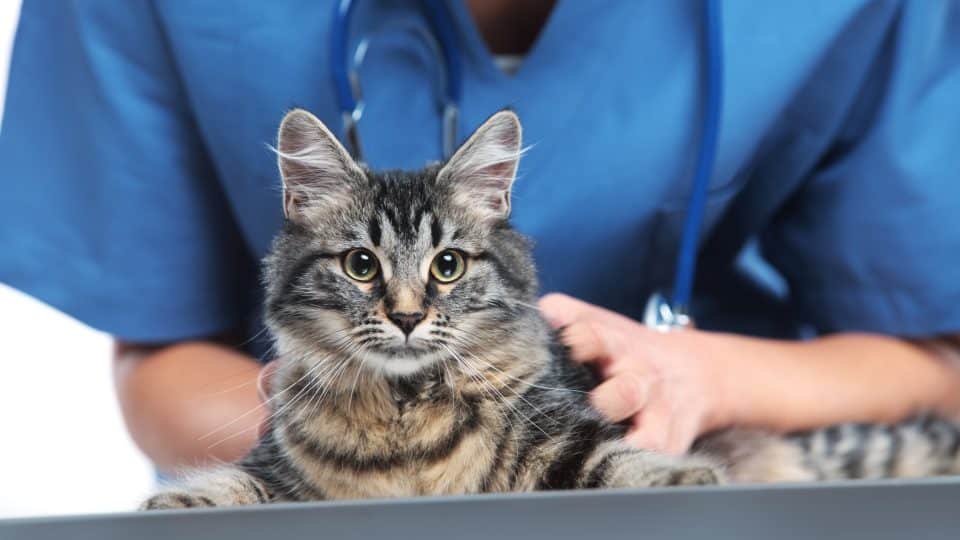- Not a substitute for professional veterinary help.
Just like you go to the doctor for an annual physical, your cat needs regular checkups, too. Regular vet visits can help your vet spot potential health issues before they have a chance to cause your cat serious harm.
If you’re a new cat parent, you might not know what to expect at your cat’s first vet appointment or how often they need to go. On average, cats should see the vet at least once a year, says Dr. Candy Akers, DVM. However, that number can differ based on the following factors.
- Age: “Kittens may need to see the vet every 3-4 weeks until a certain age, and senior cats may need to see the vet 2-3 times a year for bloodwork or other tests,” Dr. Akers says.
- Lifestyle: Dr. Akers explains that outdoor cats may face a higher risk of health issues, like parasites, than indoor cats. So, a barn cat might need more frequent vet visits than an indoor-only cat.
- Pre-existing conditions: Cats with chronic health conditions, like diabetes, may need more frequent checkups to monitor their treatment. “Health conditions like these usually require 4-6 visits per year,” Dr. Akers.
Learn more about your cat’s regular vet schedule and other tips on making vet appointments stress-free for your kitty.
Vet Visits by Age: Wellness Check Up
You can get an idea of how frequently healthy cats might need to see the vet throughout their lives in the following chart.
| Cat Age | Frequency of Vet Visits |
| Kitten (under one year) | Once every 3-4 weeks |
| Adult cat (1-10 years) | 1 per year |
| Senior cat (10+ years) | 2-3 times per year |
What Happens At A Vet Checkup?
During a regular checkup, your vet will look over nearly every aspect of your cat’s body, from nose to tail, to spot potential health issues. According to Dr. Akers, this can include an exam of your cat’s:
- Eyes
- Ears
- Mouth and teeth
- Heart and lungs
- Abdomen
- Muscles and joints
- Nerves
They’ll likely also weigh your cat to keep an eye out for any unexplained fluctuations or spot potential weight-related health concerns.

iStock/Jeng_Niamwhan
How Often Cats Need Shots: Schedule
Beyond regular checkups, your cat may also need vaccines. If you’ve recently adopted a new kitten or an unvaccinated adult cat, they’ll need to have multiple doses of core vaccines within a few weeks of each other. Then, they’ll need booster shots annually or as otherwise needed.
There are two types of vaccines for cats: core vaccines and non-core vaccines. Core vaccines are recommended for all cats, while experts only recommend non-core vaccines in some instances. The following table can give you an idea of what vaccines your cat will need and when.
| Vaccine name: | Cats before 16 weeks | Cats after 16 weeks |
| FHV-1: Feline Herpes Virus 1 | 3 to 4 weeks apart, between 6 to 16 weeks of age | Every 3 to 4 weeks |
| FCV: Feline Calcivirus | See above | See above |
| FPV: Feline Panleukopenia | See above | See above |
| FeLV: Feline Leukemia Virus (Only for cats under one-year-old.) | 8 to 12 weeks of age, with a second dose 3 to 4 weeks later | See above |
| Rabies | at 8 to 12 weeks | Annually or by local law |
Does Pet Insurance Cover Regular Vet Checkups or Vaccines?
Standard pet insurance plans generally don’t cover your cat’s annual checkups or vaccine boosters. Instead, they’re meant to cover unexpected medical expenses if your cat gets hurt or sick.
However, some insurance companies offer wellness plan add-ons that may cover regular exams or vaccines. Check with your pet insurance plan to ask about their potential wellness plan add-ons and what they would cover.
How To Take Your Cat To The Vet
If this is your first time taking a cat to the vet, it’s usually best to call ahead and make an appointment. Many states are currently experiencing a vet shortage, making it harder to walk into many clinics.
Need to see a vet right away? Check if there’s a 24-hour clinic nearby where you can take your cat if they have an emergency.
Getting your cat there
“The most important component to getting your cat safely to the vet is patience,” says Dr. Akers.
You can start the process before the day of your appointment by getting your cat accustomed to their carrier. Try encouraging them to check it out of their own accord. You can do this by putting things they like inside — toys, treats, or their bed. When your cat feels cozy and safe inside their carrier, it can make your journey easier.
Once you have your cat inside their carrier, keeping them comfortable and safe on the trip to the vet is essential. Dr. Akers suggests keeping the temperature comfortable and the radio down low if you’re traveling in a car. If you’re traveling via public transport, like a bus or the subway, keep your cat in your lap and don’t leave them unattended. But no matter how you travel to the vet, Dr. Akers stresses that you shouldn’t open the carrier until you’re in a safe place.
If your cat feels especially stressed by travel, you could spritz the carrier with a feline pheromone spray or put a special calming collar on them. After the initial appointment, you could also ask your vet for an anti-anxiety medication to make the next trip easier.

iStock/Tomwang112
Check-out reminders
Once your appointment is over (and your cat hopefully gets a clean bill of health), the vet may prompt you to set up another checkup for next year. If your cat has a health issue that needs treatment, you may need to schedule a follow-up appointment sooner.
Even if your cat is comfortable in their carrier, traveling to the vet can still be a scary and stressful experience. So, remember to give your cat rewards for making it through the ordeal once you’re home, like treats or a play session with a new toy.
If your cat is highly distressed by vet trips, it might be worth looking for a mobile veterinarian who can make a house call. “Most general services are much less stressful when performed at home rather than a scary drive and experience of a vet clinic,” says Dr. Akers.
Need help finding a vet? This directory can connect you with one based on your zip code.
Why Are Regular Vet Visits Important?
Whether you travel to the vet or the vet comes to you, regular visits are important for your cat’s overall health.
Cats naturally tend to hide their symptoms when they’re sick or in pain, but a vet could spot any potential health issues early so your cat gets the proper treatment. This could help you avoid any potential medical emergencies later on. An ounce of prevention is worth a pound of cure!



